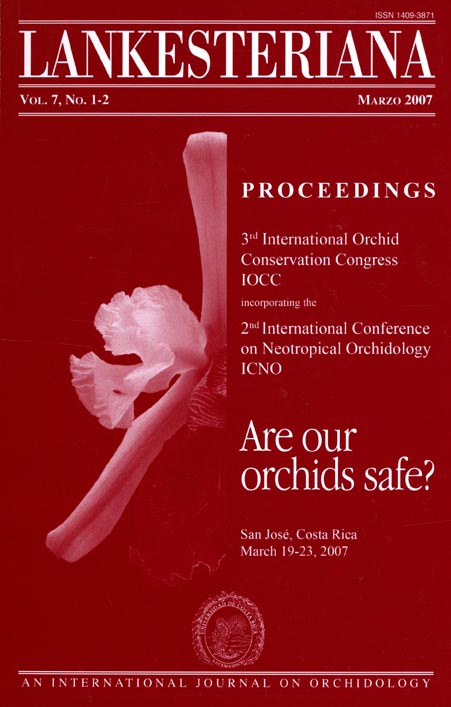Genetic and morphological variation in the Bulbophyllum exaltatum (Orchidaceae) complex occurring in the Brazilian “Campos Rupestres”: implications for taxonomy and biogeography
DOI:
https://doi.org/10.15517/lank.v7i1-2.18446Keywords:
allozymes, Bulbophyllum exaltatum, Cadeia do Espinhaço, campo rupestre, genetic variability, geographic barrierAbstract
Bulbophyllum Thouars is a pantropical genus. It is one of the most species-rich genera of the Orchidaceae, with ca. 1.200 species (Dressler 1993). The genus pre- sents myophily (pollination by Diptera) as pollination syndrome. Because orchid species are mainly self- compatible, we expect that fly-pollinated orchids pre- sent low variability within the populations and high genetic differentiation among conspecific populations, due to the reduction of the gene flow (Borba & Semir 1998, Borba et al. 2001). This could help to explain the high number of species in genera of fly-pollinated orchids, most of them with restricted distribution.
Downloads
Downloads
Published
How to Cite
Issue
Section
License
According to the Open Access policy promoted by the University of Costa Rica, all the papers published by Lankesteriana are licensed under the Creative Commons copyright and can be downloaded free of charge. The journal holds copyright and publishing rights under the CC BY-NC-ND 3.0 CR license.
Before the publication of the materials submitted by the author(s) in LANKESTERIANA, the author(s) hereby assign all rights in the article to the Lankester Botanical Garden.





